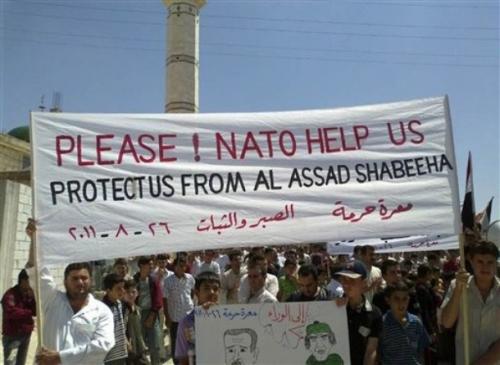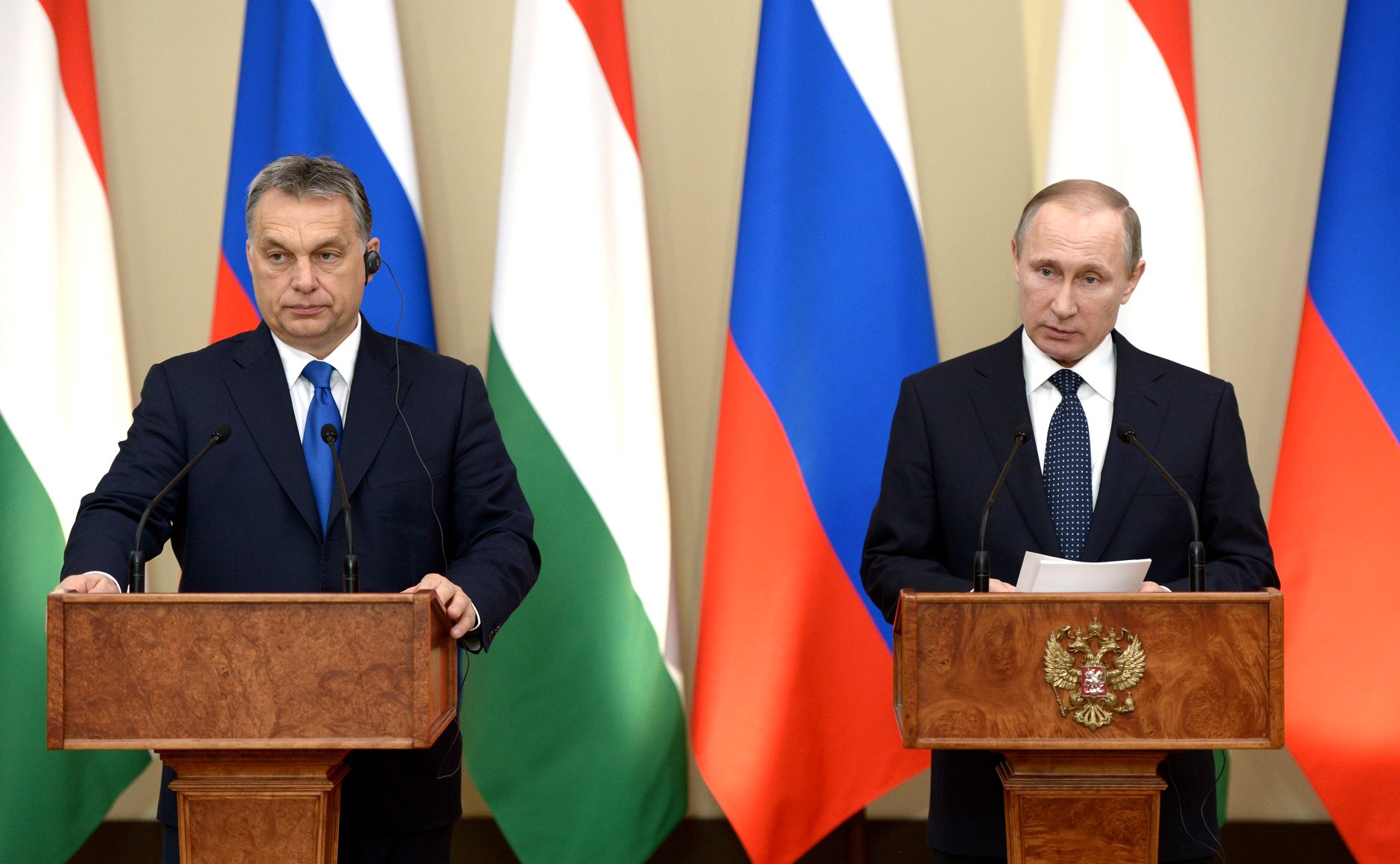Revived by the outbreak of the Arab Spring, the conflict between oppositionists to the Assad regime and the Syrian government has escalated in recent months, plunging the nation into a civil war. As its violent nature intensifies, the humanitarian crisis deepens. Consequently, NATO nations face pressures from external and internal actors who argue that a more active role should be taken.
In addition to demands on Capitol Hill, allies such as Qatar, have urged the United States to become more involved. They caution President Barack Obama that inaction will not solve the Syrian crisis, which threatens to destabilize the entire region. On May 13th, British Prime Minister David Cameron and Barack Obama had a meeting in Washington. Both leaders called for talks between the insurgents and Assad’s government and pledged to increase their support of the rebels by intensifying pressure on the Assad regime and doubling non-lethal aid.
In Canada, an emergency debate in the House of Commons was held on May 7th to discuss Israel’s involvement in the civil war and the allegations that the Assad regime is using chemical weapons. In a press release following the debate, Foreign Affairs Minister John Baird emphasized that greater clarity regarding the chemical weapons concerns was necessary before Canada’s course of action could be determined. Baird also announced that Canada would focus on a political solution over military involvement.
Greater speculation surrounds Turkey’s position on the Syrian crisis especially after two car bombs exploded in the Turkish town of Reyhanli on May 11th. NATO’s strategic concept includes the commitment to collective defense. In accordance with article 5 of the Washington Treaty, members pledged assistance in the event of an attack on an individual member nation. However, despite Prime Minister Recep Tayyip Erdogan’s claims that the perpetrators were linked to the Syrian regime, the Turkish government is hesitant to make rash decisions. Turkey has not requested any additional consultations or support from NATO, preferring to collect more facts and background information on the event. Caution, however, should not be mistaken for silence.
[captionpix align=”right” theme=”elegant” width=”300″ imgsrc=”http://natoassociation.ca/wp-content/uploads/2013/06/fsadudes.jpg” captiontext=””]
On May 16th, Prime Minister Erdogan flew to Washington. His meeting with President Obama centered on discussing areas of cooperation between the two nations, including the Syrian crisis. In the press briefing, President Obama announced that both leaders agreed that the only way to resolve the Syrian crisis was for Assad to transfer power to a transitional body. When a reporter asked what type of initiative the United States was prepared to take to meet this goal, President Obama reiterated the policies reached at the meeting with Prime Minister Cameron. He added, however, that while the United States reserved the right to consider military options, they would not take unilateral military action in Syria.
Prime Minister Erdogan reiterated President Obama’s calls for an international solution and dispelled fears that Turkey would invoke article 5 in the near future when he stated that, “We don’t need to have other problems, issues in the region.” The Turkish public agrees. Opinion polls show that the Turkish people are opposed to a war with Syria. As an extreme example, demonstrations have erupted in Reyhanli where protesters blame the assertive policies of Erdogan’s government for the attacks. Without American aid and popular support, military action is too large a risk.
Though Canada and the United States are reluctant to support the rebel groups militarily, French President Francois Hollande, had urged at the March EU summit in Brussels for the termination of the arms embargo. On May 27th his recommendation was accepted and came into force on June 1st. It was decided at the Foreign Affairs Council Meeting to allow member nations to transfer or sell military equipment to the Syrian National Coalition for Opposition and Revolutionary Forces. Adequate safeguards, such as information regarding the end-user and destination of the equipment, are required prior to the authorization of shipments.
While some view this decision with alarm, British Prime Minister David Cameron defended the EU’s decision in a speech to the House of Commons on June 3rd. He argued that the international community had to do more to support the official opposition so that there would be “a clear sense that Assad can not fight his way to victory, nor use the talks to buy more time to slaughter Syrians in their homes and streets.” At the same time, both England and France, the prime movers of the campaign to lift the embargo, have stressed their dedication to a negotiated settlement and refuted any impending plans to ship arms to the rebels.
Russia reacted to the EU’s efforts to tilt the military balance against Assad by promising more exports of military equipment to the Syrian government. The Russian government has stated that they will send S-300 missiles to the Syrian government to strengthen their defenses against foreign intervention. Israel has declared that they will not stand for the transfer of such weapons and would be forced to destroy the delivery upon arrival. As the Syrian conflict threatens to creep further into the region, NATO’s policies come under closer scrutiny.
Simply put, military intervention by NATO would be a gamble. Would it actually protect the security of member nations? Or would it add instability to the region, aggravate tensions and deepen the conflict? The Syrian crisis has already embroiled neighboring countries like Lebanon, Iraq, Jordan and Turkey and provides an arena for Israel and Iran to challenge each other.
Meanwhile the Syrian army has made considerable advances and the military has been strengthened by Russia’s recent shipment of the Yakhont antiship missile system. Outfitted with a more advanced missile guidance system, the Syrian army can counter limited air strikes and international efforts to impose a naval embargo or a no-fly zone.
If NATO were to intervene, they would confront a greater adversary than was faced in Libya and could be drawn into a proxy war with Assad’s allies, notably Russia, Iran and Hezbollah. This threatens to expand and prolong the civil war. Foremost in many minds are the Iraq and Afghanistan crises, which required an astronomical commitment in the form of resources and time. With this in mind, parliamentarians from NATO nations recognized at the Parliamentary Assembly, held in Luxembourg on May 18th, that while the United Nations Security Council remains divided, the options for an international response are limited.
Instead NATO nations defend a political solution as the course of action that promises fewer casualties in a quagmire that has already claimed many lives. Great expectations are placed on a tentative international conference planned to take place in Geneva in July. It will bring together the Syrian government and the opposition with the goal of negotiating the formation of a transitional government. This top-down diplomatic solution relies on the willingness of the government and the insurgents to negotiate.
Prospects appear dim. In an interview with Argentine newspaper Clarin, Assad doubted the potential of negotiations to solve the Syrian crisis and declared that his government would not engage in talks unless the opposition disarmed. At the same time, rebel groups made their participation conditional on greater access to weapons from Western nations. Furthermore, as the opposition coalition struggled to agree on a clear set of policies at the Friends of Syria Meeting in Istanbul, its disunity was unmistakably illustrated. Despite this, allies like the United States argue that the rebels will come to the negotiating table because one unifying principle overpowers all rifts: the firm conviction that Syria’s future cannot include Assad. These obstacles aside, is bears asking whether it is even possible to hold mature and meaningful negotiations after such violence.
Where does this leave NATO in the Syrian crisis? With not a lot of room to maneuver. NATO is far from a military intervention but no closer to reaching a political or diplomatic solution. As President Obama aptly reflected, there is no magic formula for dealing with the Syrian crisis. And yet, if the opposition and the Syrian government refuse to come to the negotiating table in July and the costs of military intervention remain too high, what course of action is left to NATO members? One thing is certain: the ears of the public will be strained as we listen for updates on the July conference.




